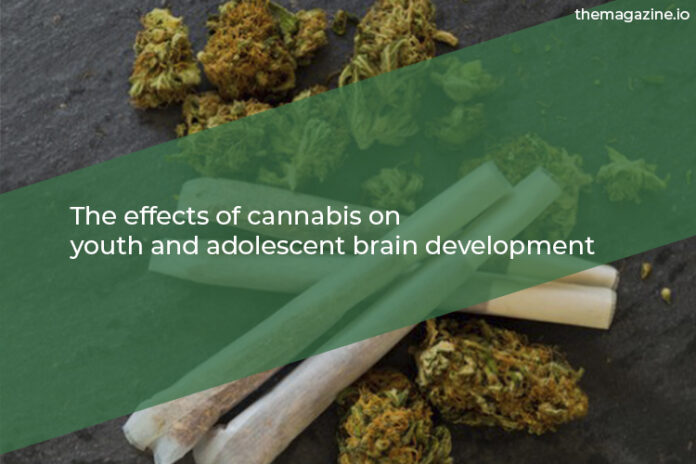Cannabis is a psychoactive substance that has been legalized for medical and/or recreational use in many states in the United States. However, its use by adolescents and young adults is a subject of concern due to the potential negative impact it can have on brain development. The human brain undergoes significant changes during adolescence, making it particularly vulnerable to the effects of drugs like cannabis. In this article, we will explore the effects of cannabis on youth and adolescent brain development.
The main psychoactive component of cannabis is delta-9-tetrahydrocannabinol (THC). THC binds to cannabinoid receptors in the brain, leading to the release of dopamine, a neurotransmitter associated with pleasure and reward. This can result in feelings of euphoria and relaxation, as well as altered perception and cognition. However, THC can also have negative effects on brain development, particularly in young people.
Research has shown that cannabis use during adolescence can have a negative impact on brain development, particularly in areas of the brain involved in executive function, such as the prefrontal cortex. The prefrontal cortex is responsible for decision-making, impulse control, and planning, among other functions. Studies have found that cannabis use during adolescence is associated with reduced prefrontal cortical thickness, which may lead to deficits in executive function.
Cannabis use during adolescence has also been associated with changes in brain structure and function. A study published in the Journal of Neuroscience found that frequent cannabis use during adolescence was associated with reduced white matter integrity in the brain, particularly in regions associated with attention and impulse control. Another study published in the Journal of Child Psychology and Psychiatry found that cannabis use during adolescence was associated with altered neural activation during working memory tasks.
In addition to its impact on brain structure and function, cannabis use during adolescence has also been associated with negative behavioral outcomes. A study published in the Journal of the American Academy of Child and Adolescent Psychiatry found that cannabis use during adolescence was associated with increased risk of depression, anxiety, and suicidal ideation. Other studies have found that cannabis use during adolescence is associated with increased risk of psychosis and other mental health disorders.
It is important to note that not all adolescents who use cannabis will experience negative effects on brain development or mental health. However, the potential risks of cannabis use during adolescence highlight the need for caution when it comes to youth cannabis consumption. The American Academy of Pediatrics recommends that cannabis use by adolescents be discouraged, and that efforts be made to reduce youth access to cannabis.
In conclusion, cannabis use during adolescence can have a negative impact on brain development, particularly in areas of the brain involved in executive function. It has also been associated with negative behavioral outcomes, including increased risk of mental health disorders. While not all adolescents who use cannabis will experience these negative effects, the potential risks highlight the need for caution when it comes to youth cannabis consumption. Parents, educators, and healthcare providers can play an important role in educating young people about the potential risks of cannabis use and promoting healthy decision-making.



